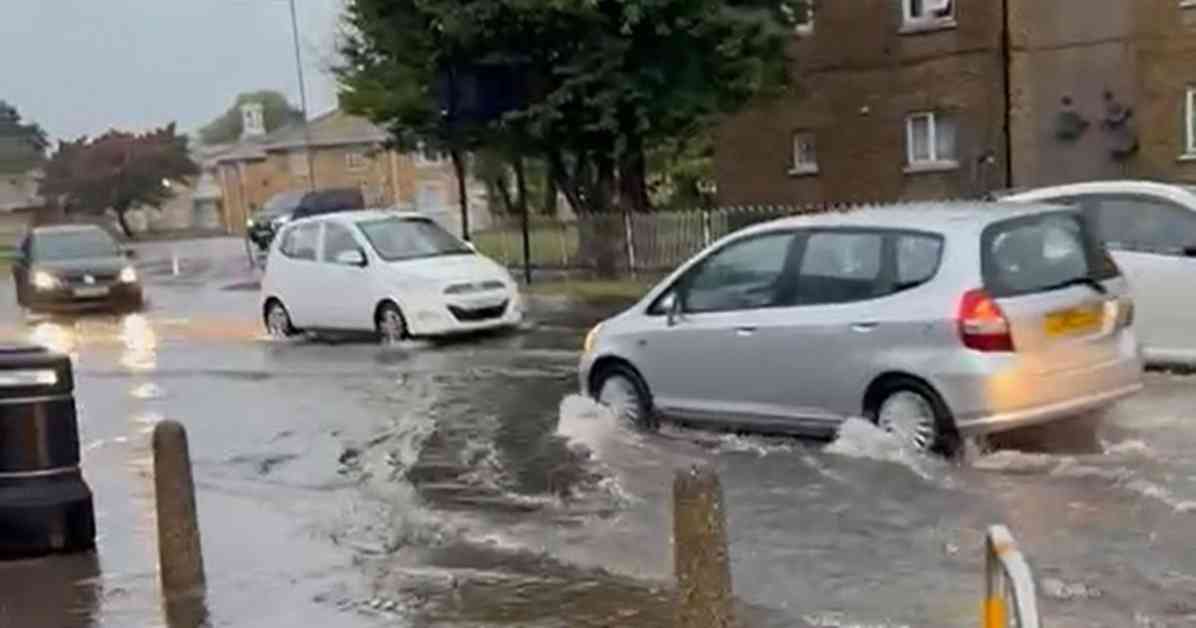Heavy rainfall and flooding continue to be a concern in the London area, particularly near major transportation hubs such as Heathrow Airport. The Environment Agency has issued 32 flood warnings for areas including Oxfordshire and Bedfordshire, with a specific alert for Colne Brook at Iver and Colnbrook, which is adjacent to the airport. While flights are not expected to be impacted, it is important for residents and travelers to remain vigilant and prepared for potential disruptions.
The recent floods in London have caused chaos, with parts of the capital submerged and sinkholes appearing in various locations. The transport system has also been affected, leading to closures and delays. The situation has been exacerbated by the heavy rainfall, which has left many areas waterlogged and vulnerable to further flooding.
Residents in South Ruislip, for example, have been dealing with significant water levels, with some describing the area as resembling the Lake District. Lee Panch, who works at a convenience store in the area, shared his experience of the flooding, noting that the water levels were dangerously high. Tom Searle, a long-time resident of South Ruislip, expressed that the recent flooding was the worst he had ever seen, causing damage to his property and leaving him without electricity.
Despite the challenges faced by Londoners, there is some relief on the horizon. The Met Office, the UK’s national forecaster, has not issued any weather warnings for the southern region this week, aside from one warning spanning from Nottingham to Newcastle on Thursday. This respite from severe weather warnings offers a glimmer of hope for those impacted by the recent floods and provides an opportunity for recovery and repair efforts to take place.
As Londoners navigate through the aftermath of the floods, it is crucial for local authorities and residents to work together in mitigating the impact of future incidents. Preparation and awareness are key in ensuring the safety and well-being of individuals living in flood-prone areas. By staying alert and informed, residents can better protect themselves and their communities from the devastating effects of flooding.
Impact on Transportation and Infrastructure
The recent floods in London have not only affected residents but have also had a significant impact on the city’s transportation and infrastructure. Sinkholes have emerged in various locations, posing a danger to pedestrians and motorists. The transport system has been disrupted, with closures and delays causing inconvenience to commuters.
Heathrow Airport, one of the busiest airports in the world, is located near areas that are currently under flood warnings. While flights are expected to operate as usual, the proximity of the flooding to the airport raises concerns about potential disruptions in the future. It is essential for airport authorities to monitor the situation closely and take necessary precautions to ensure the safety of passengers and staff.
Community Resilience and Support
In times of crisis, community resilience and support play a crucial role in helping individuals and neighborhoods recover from the impact of natural disasters such as floods. Local residents in flood-affected areas have come together to offer assistance and support to those in need, demonstrating the strength and solidarity of London’s communities.
Non-profit organizations and emergency services have also been instrumental in providing aid to residents affected by the floods. From distributing essential supplies to offering shelter and assistance with cleanup efforts, these organizations have been essential in helping communities rebuild and recover from the devastation caused by the floods.
Preparedness and Future Planning
As the threat of flooding continues to loom over London, it is imperative for residents and authorities to prioritize preparedness and future planning to mitigate the impact of potential disasters. Investing in flood defenses, improving drainage systems, and raising awareness about flood risks are essential steps in building a more resilient and sustainable city.
Public education and awareness campaigns can help individuals understand the risks associated with flooding and empower them to take proactive measures to protect themselves and their properties. By working together and sharing information, Londoners can build a more resilient community that is better equipped to handle the challenges posed by severe weather events.
In conclusion, the recent floods in London have highlighted the importance of preparedness, resilience, and community support in addressing natural disasters. By staying alert, informed, and united, residents can weather the storm and emerge stronger and more resilient in the face of adversity.












